Potential Impacts of Climate Change on Precipitation over Lake Victoria, East Africa, in the 21st Century
Abstract
:1. Introduction
2. Data and Methods
2.1. Description of the Study Area
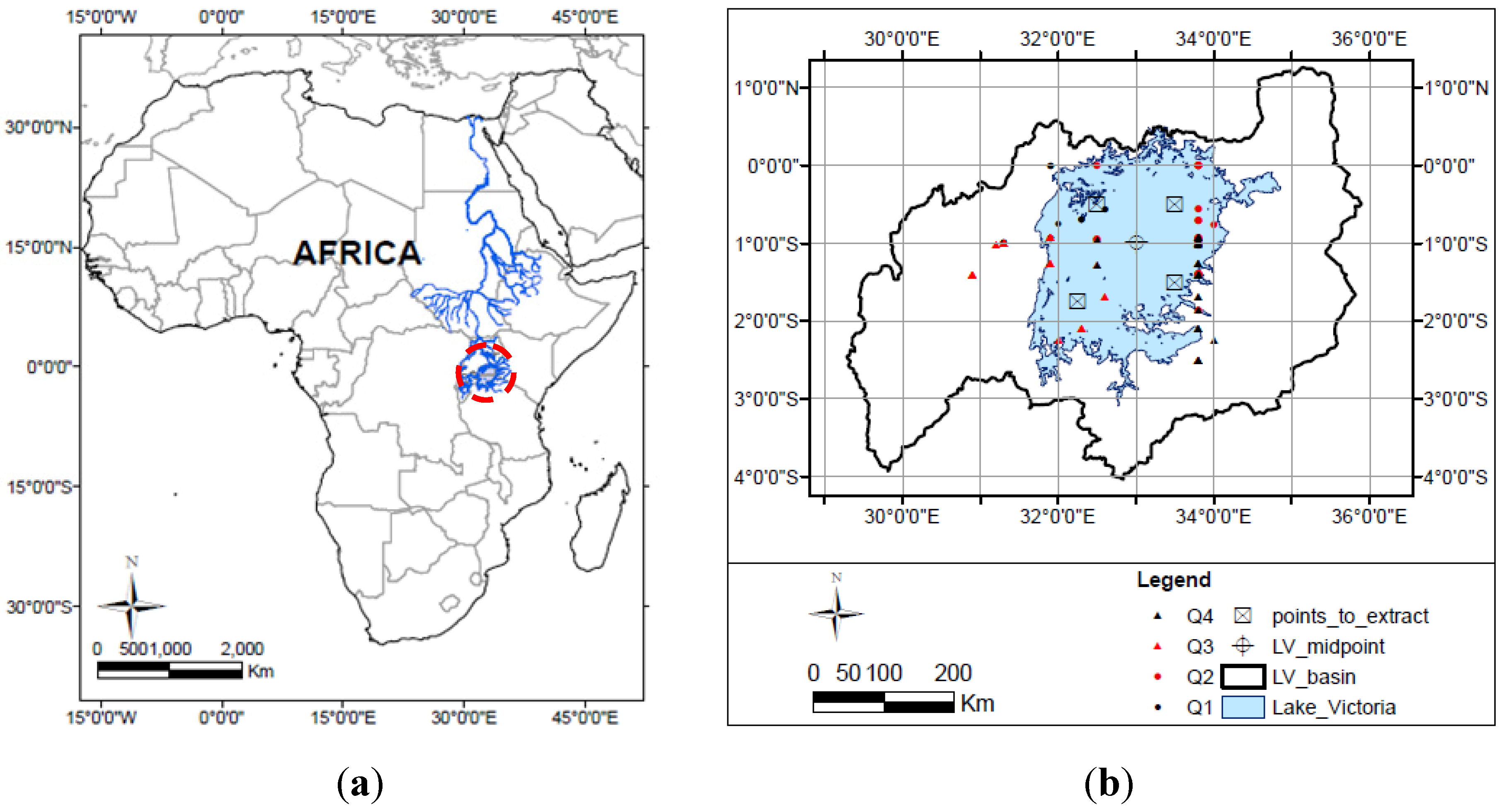
2.2. Precipitation and Lake Levels

2.3. Climate Model Simulations
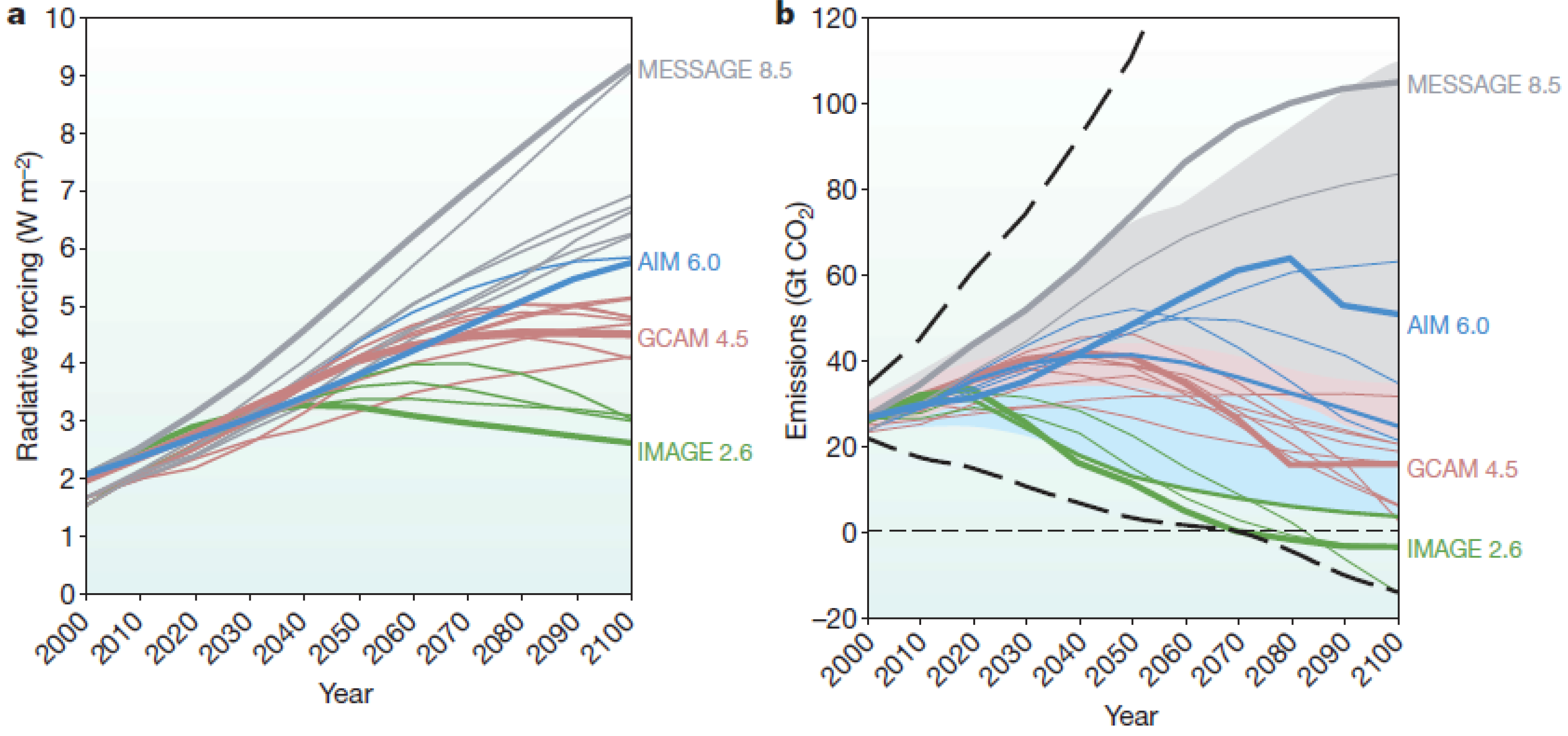
| Modeling Center | Country | Model | Lat. | Lon. | Res. | Color | |
|---|---|---|---|---|---|---|---|
| i. Commonwealth Scientific and Industrial Research Organization/ Bureau of Meteorology (CSIRO-BOM) | Australia | ACCESS1.0 | 1.87 | 1.25 | MR | g | |
| ii. College of Global Change and Earth System Science, Beijing Normal University | China | BNU-ESM | 2.81 | 2.79 | LR | r | |
| iii. Centro Euro-Mediterraneo per I Cambiamenti Climatici | Italy | CMCC-CESM | 3.75 | 3.71 | LR | r | |
| Italy | CMCC-CMS | 1.87 | 1.87 | MR | g | ||
| iv. Centre National de Recherches Meteorologiques / Centre Europeen de Recherche et Formation Avancees en Calcul Scientifique (CNRM/CERFACS) | France | CNRM-CM5 | 1.41 | 1.40 | HR | b | |
| v. Commonwealth Scientific and Industrial Research Organization/ Queensland Climate Change Centre of Excellence (CSIRO-QCCCE) | Australia | CSIRO-Mk3.6 | 1.87 | 1.87 | MR | g | |
| vi. Canadian Centre for Climate Modelling and Analysis | Canada | CanESM2 | 2.81 | 2.79 | LR | r | |
| vii. Geophysical Fluid Dynamics Laboratory | US-NJ | GFDL-ESM2G | 2.5 | 2.0 | LR | r | |
| US-NJ | GFDL-ESM2M | 2.5 | 2.0 | LR | r | ||
| viii. NASA Goddard Institute for Space Studies | US-NY | GISS-E2-H | 2.5 | 2.0 | LR | r | |
| US-NY | GISS-E2-R | 2.5 | 2.0 | LR | r | ||
| ix. Met Office Hadley Centre | UK-Exeter | HadCM3 | 3.75 | 2.5 | LR | r | |
| UK-Exeter | HadGEM2-CC | 1.87 | 1.25 | MR | g | ||
| UK-Exeter | HadGEM2-ES | 1.75 | 1.25 | MR | g | ||
| x. Institut Pierre-Simon Laplace | France | IPSL-CM5A-LR | 3.75 | 1.89 | LR | r | |
| France | IPSL-CM5A-MR | 2.50 | 1.26 | LR | r | ||
| France | IPSL-CM5B-LR | 3.75 | 1.89 | LR | r | ||
| xi. Atmosphere and Ocean Research Institute (The University of Tokyo), National Institute for Environmental Studies, and Japan Agency for Marine-Earth Science and Technology | Japan | MIROC-ESM | 2.81 | 2.79 | LR | r | |
| Japan | MIROC5 | 1.40 | 1.40 | HR | b | ||
| xii. Max Planck Institute for Meteorology (MPI-M) | Germany | MPI-ESM-LR | 1.87 | 1.87 | MR | g | |
| Germany | MPI-ESM-MR | 1.87 | 1.87 | MR | g | ||
| xiii. Meteorological Research Institute | Japan | MRI-CGCM3 | 1.12 | 1.12 | HR | b | |
| xiv. Norwegian Climate Centre (NCC) | Norway | NorESM1-M | 2.50 | 1.89 | LR | r | |
| xv. Beijing Climate Center, China Meteorological Administration | China | BCC-CSM1.1m | 1.12 | 1.12 | HR | b | |
| China | BCC-CSM1.1 | 2.81 | 2.79 | LR | r | ||
| xvi. Institute for Numerical Mathematics | Russia | INM-CM4 | 2.0 | 1.5 | MR | g | |
2.4. Model Performance Evaluation
3. Results and Discussion
3.1. GCM Performance Evaluation
3.1.1. Monthly, Seasonal and Annual Precipitation

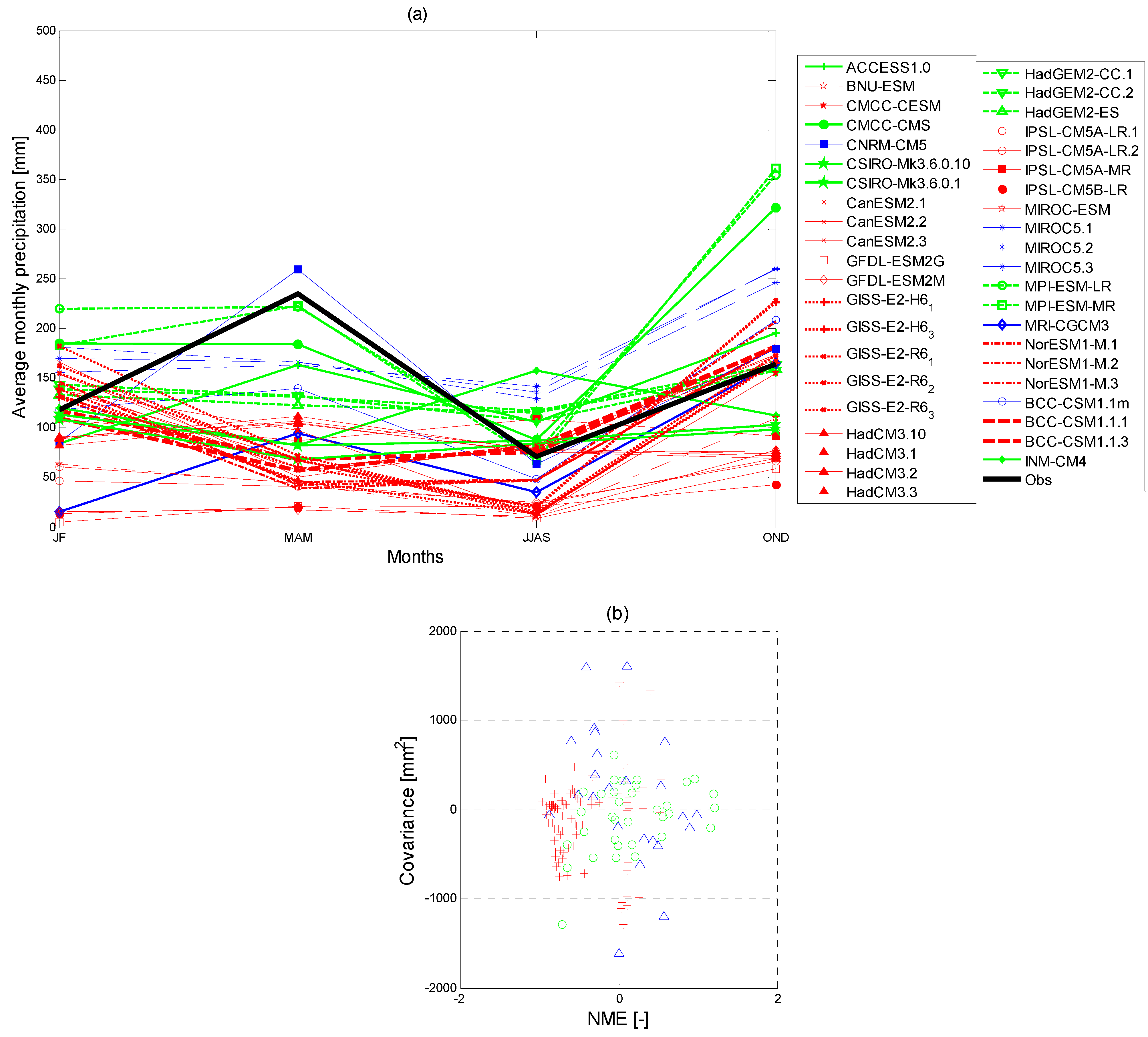
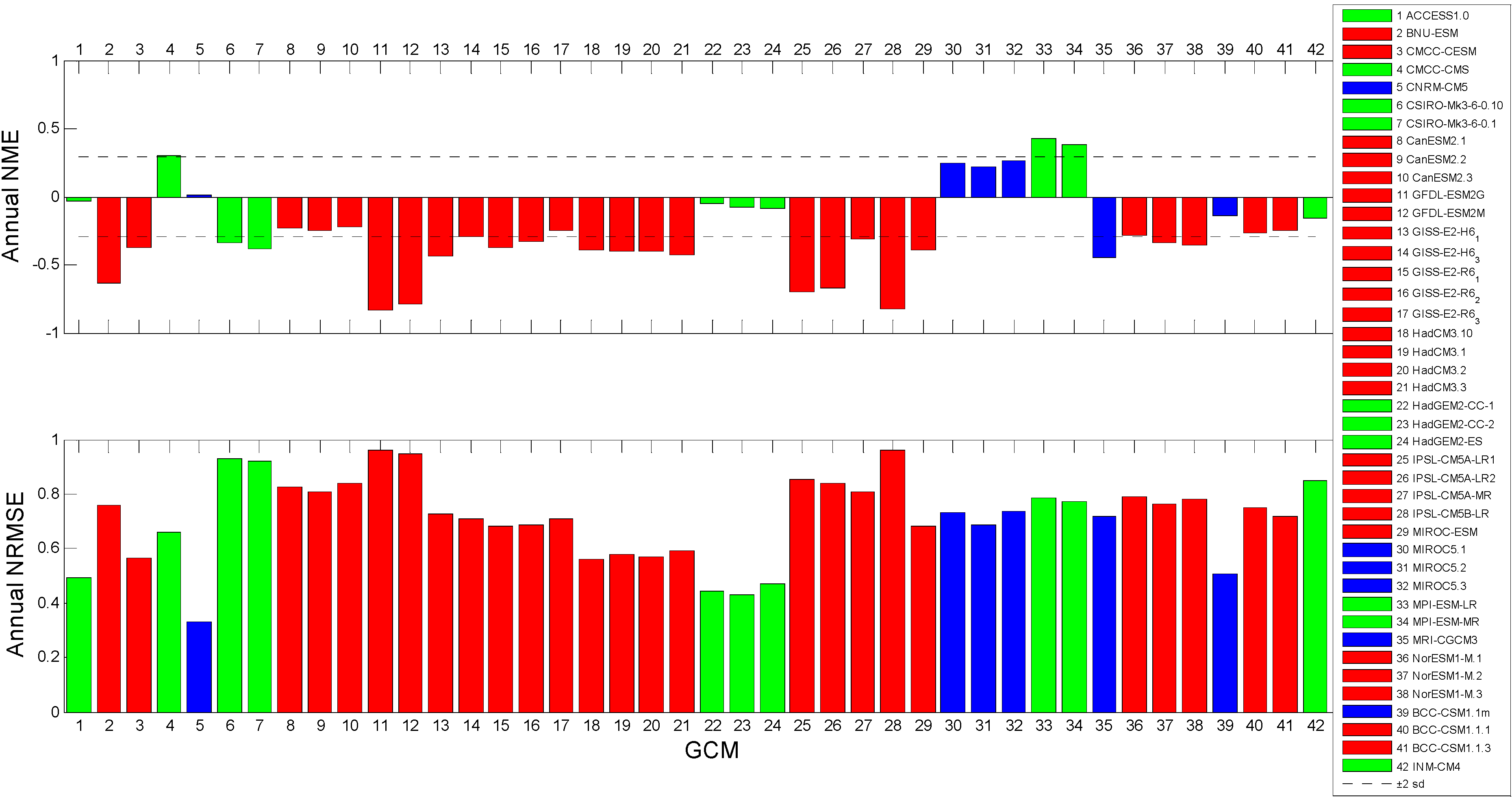

3.1.2. Precipitation Extremes
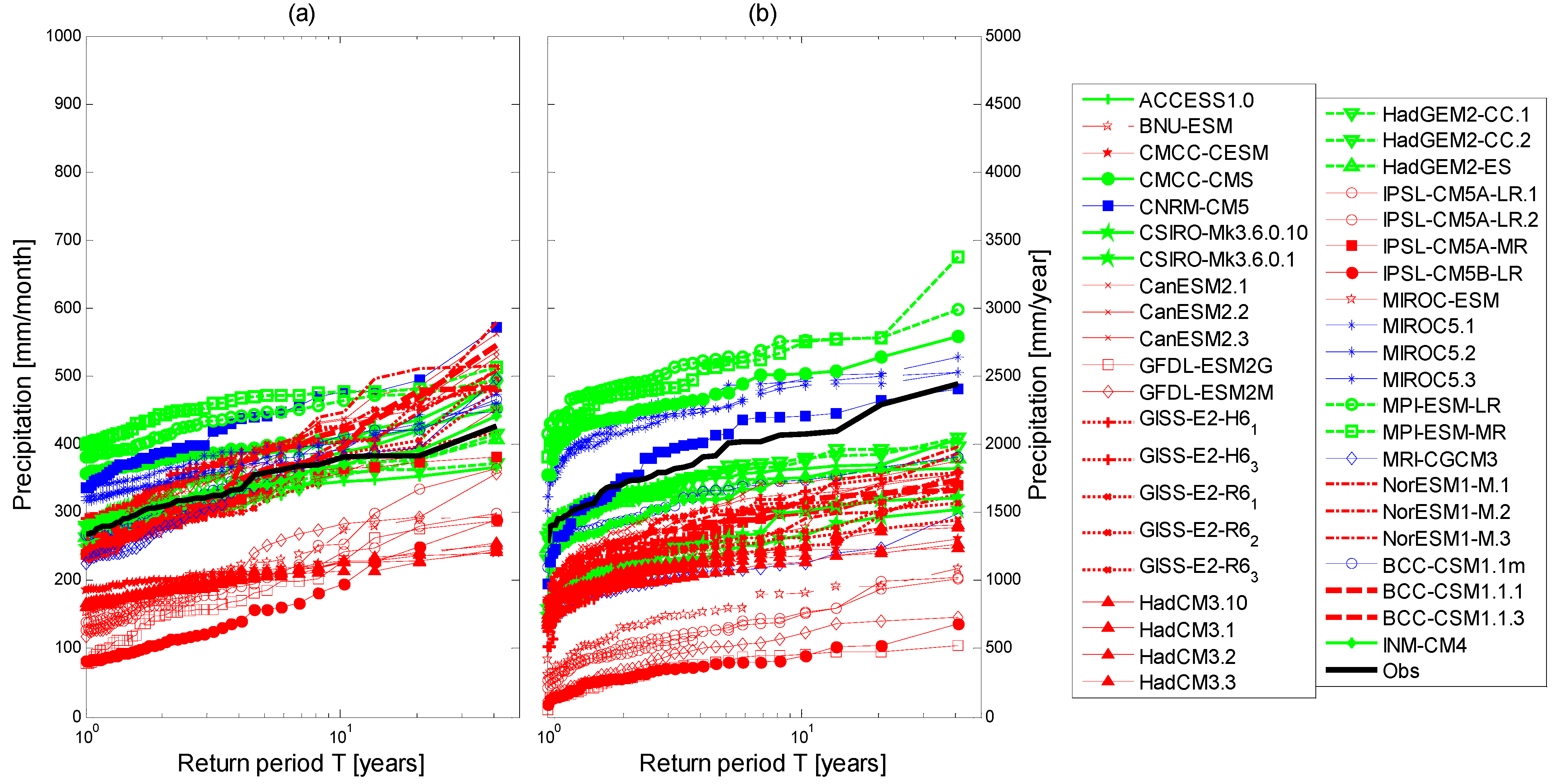
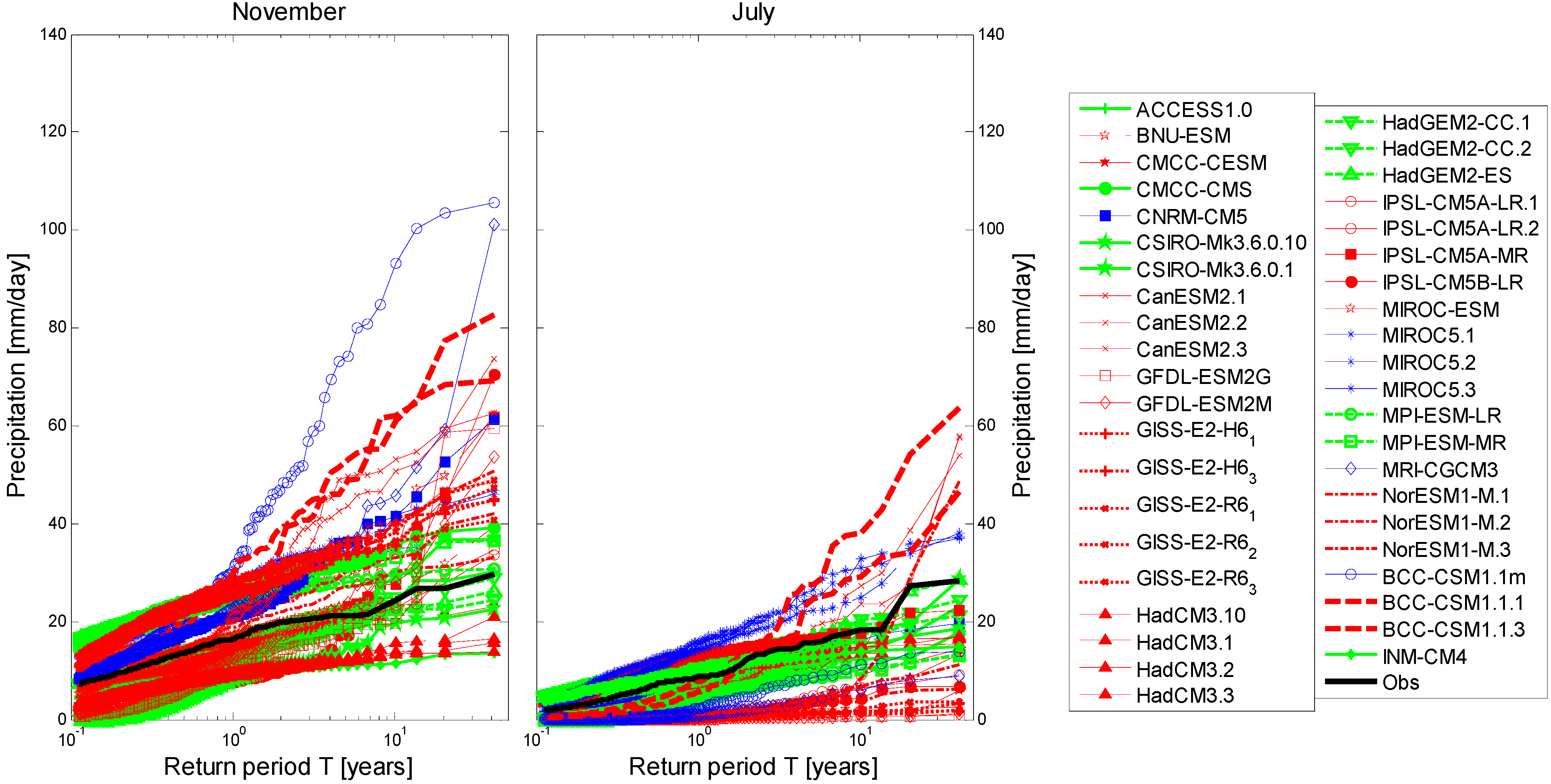
| Good Performing GCMs | Long. | Lat. | Resolution | Poor Performing GCMs | Long. | Lat. | Resolution |
|---|---|---|---|---|---|---|---|
| CNRM-CM5 | 1.41 | 1.40 | High | HadCM3 | 3.75 | 2.5 | Low |
| MIROC5 | 1.40 | 1.40 | High | IPSL-CM5A-LR | 3.75 | 1.89 | Low |
| BCC-CSM1.1m | 1.12 | 1.12 | High | IPSL-CM5B-LR | 3.75 | 1.89 | Low |
| ACCESS1.0 | 1.87 | 1.25 | Medium | GFDL-ESM2G | 2.5 | 2.0 | Low |
| HadGEM2-CC | 1.87 | 1.25 | Medium | GFDL-ESM2M | 2.5 | 2.0 | Low |
| HadGEM2-ES | 1.75 | 1.25 | Medium |
3.2. Analysis of Projected Future Precipitation by GCMs
3.2.1. Monthly, Seasonal and Annual Precipitation
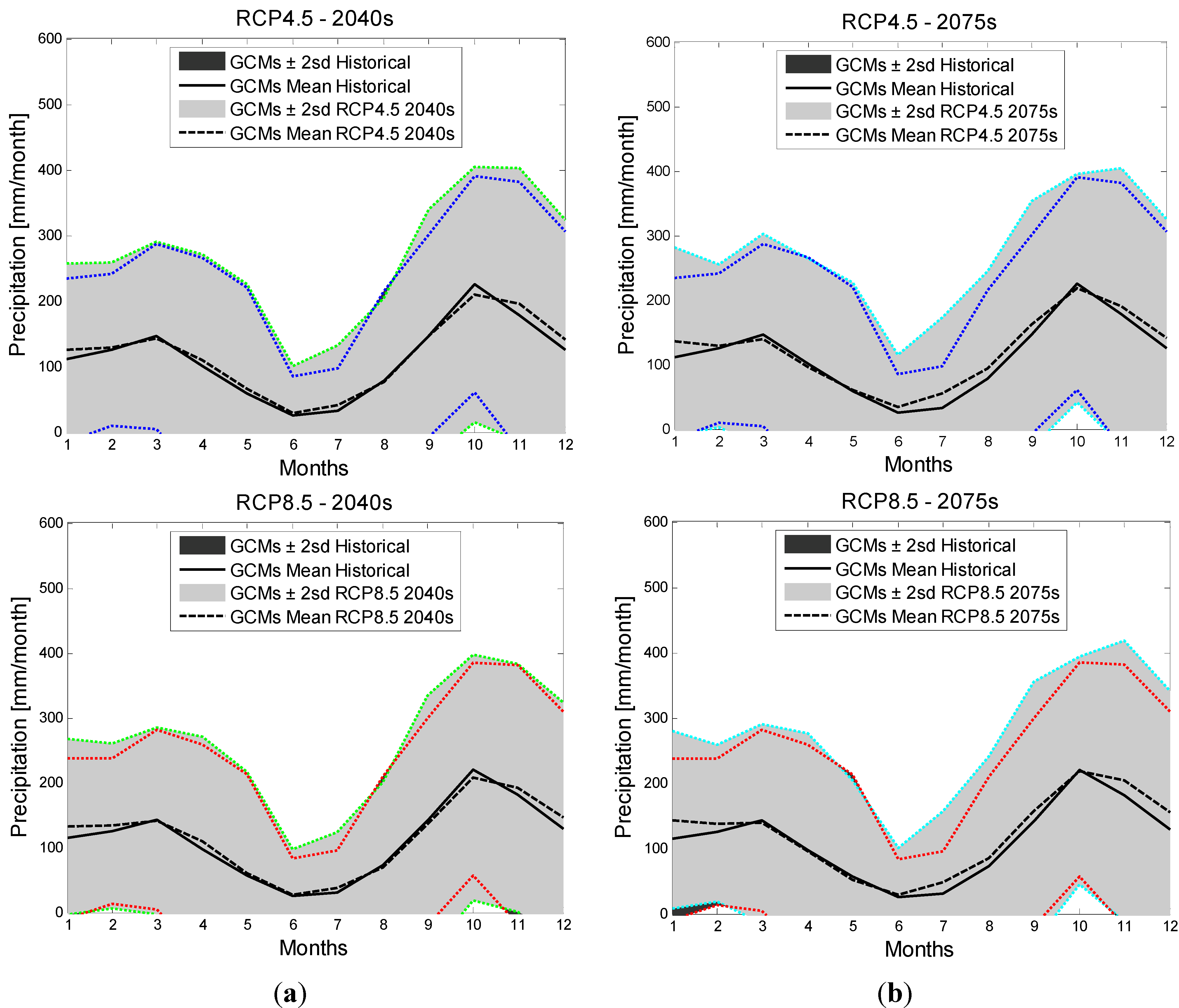
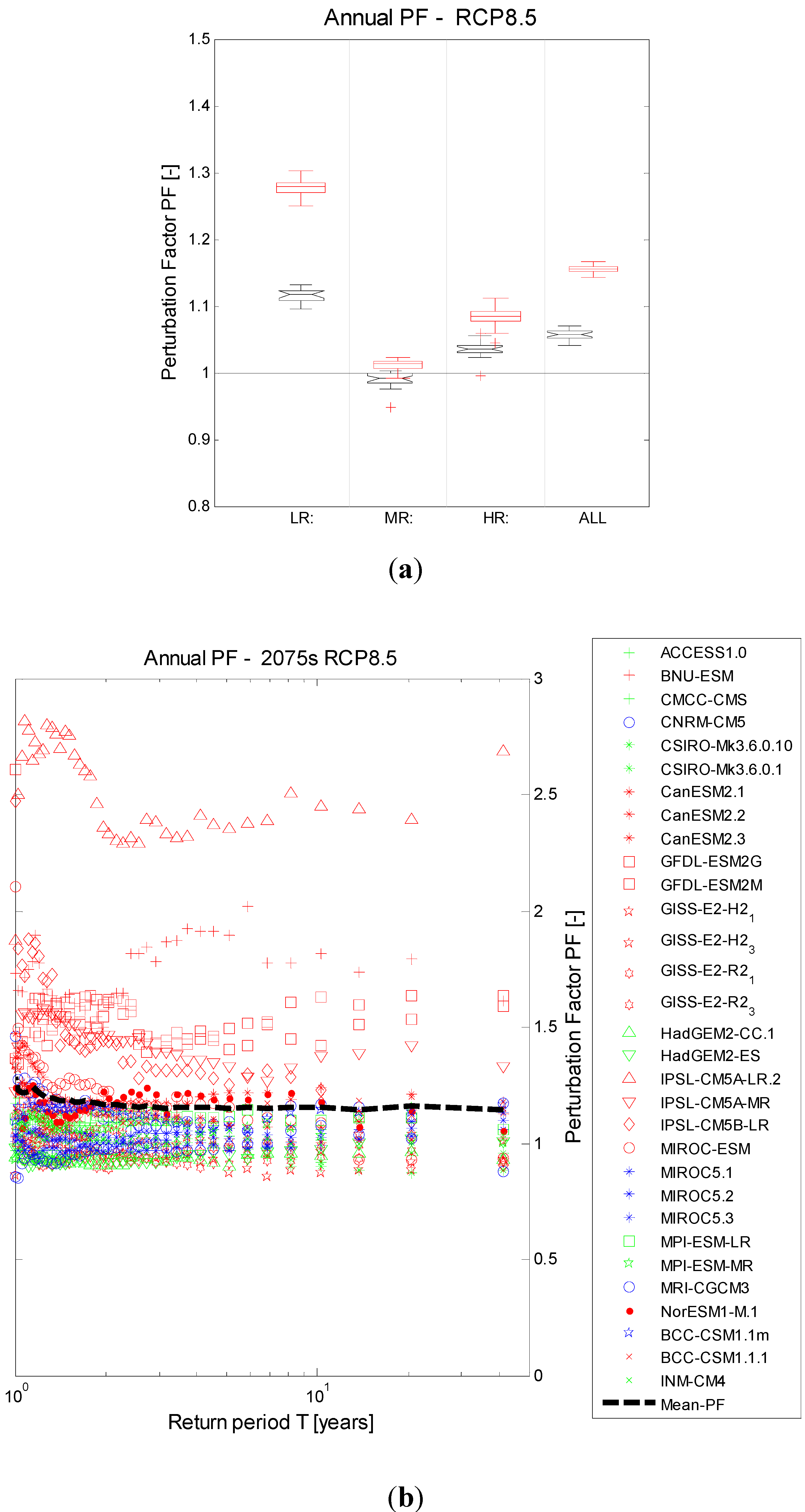

3.2.2. Precipitation Extremes
Changes in Number of Wet Days

Changes in Wet Day Intensities

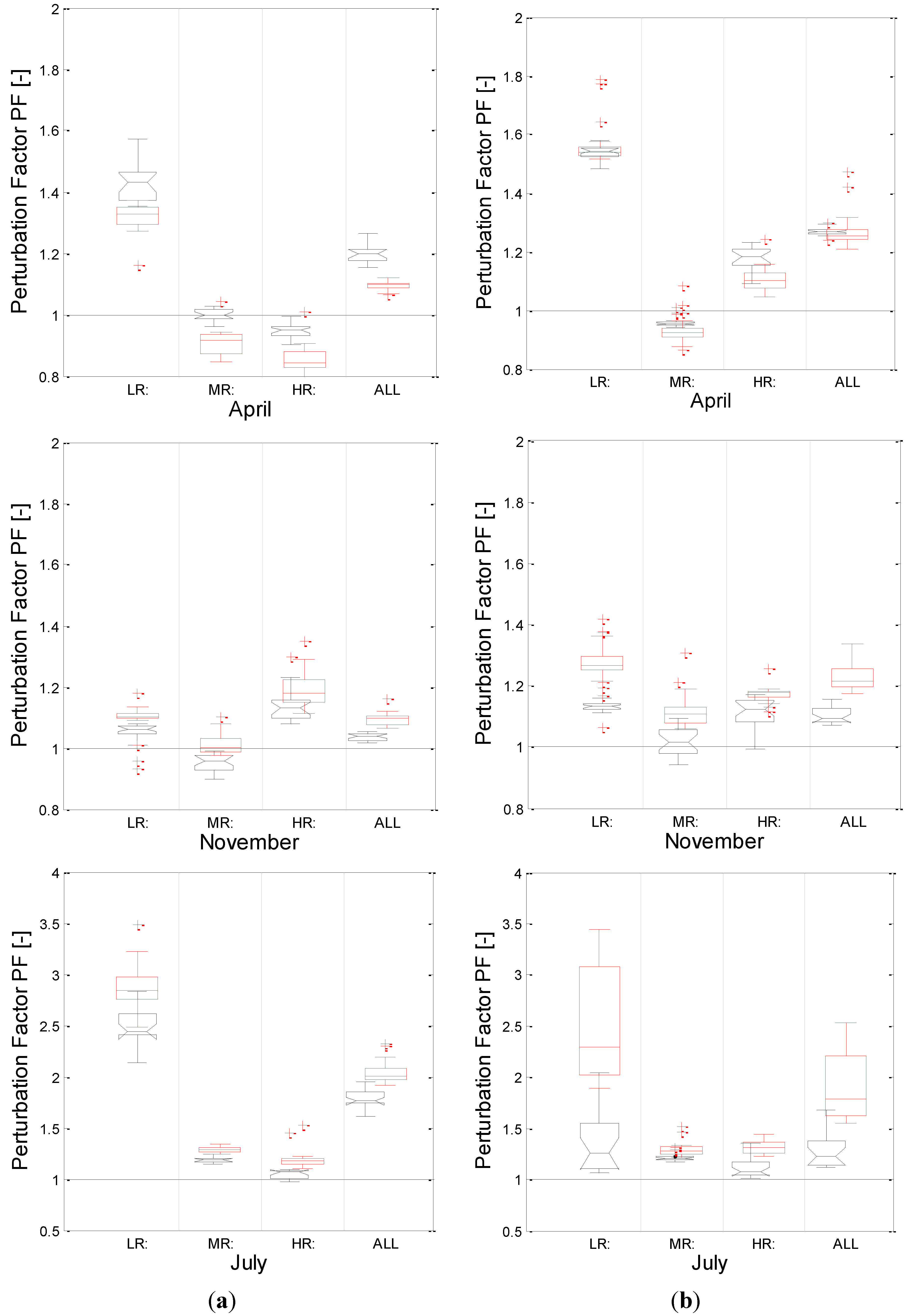
3.3. RCP4.5 vs. RCP8.5 and 2040s vs. 2075s Comparison
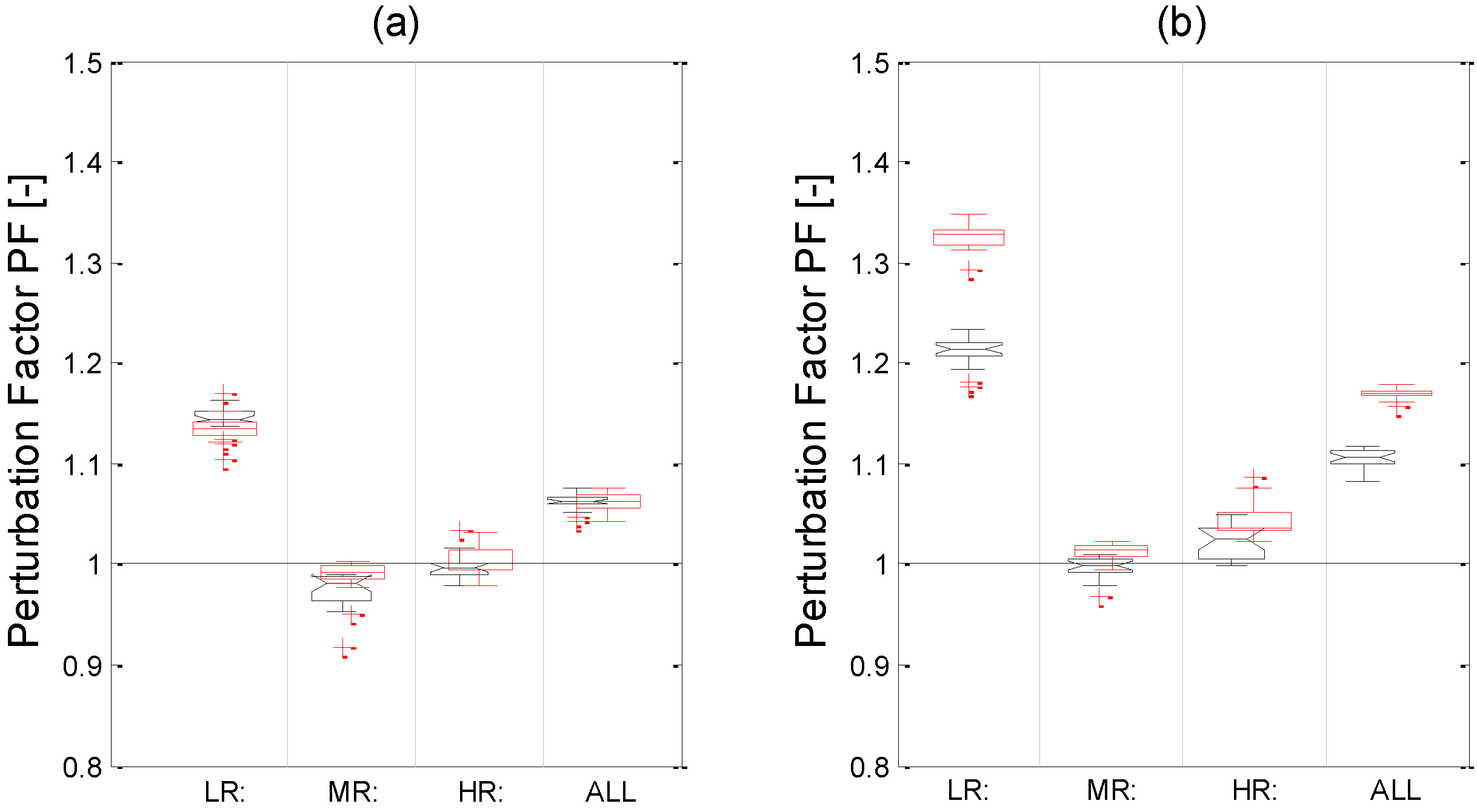

4. Conclusions
Acknowledgments
Author Contributions
Conflicts of Interest
References
- Kite, G.W. Recent changes in level of Lake Victoria/Récents changements enregistrés dans le niveau du Lac. Hydrol. Sci. J. 1981, 26, 233–243. [Google Scholar]
- Kite, G.W. Analysis of Lake Victoria levels. Hydrol. Sci. J. 1982, 27, 99–110. [Google Scholar] [CrossRef]
- Piper, B.S.; Plinston, D.T.; Sutcliffe, J.V. The water balance of Lake Victoria. Hydrol. Sci. J. 1986, 31, 25–37. [Google Scholar] [CrossRef]
- Yin, X.; Nicholson, S.E. The water balance of Lake Victoria. Hydrol. Sci. J. 1998, 43, 789–811. [Google Scholar] [CrossRef]
- Tate, E.; Sutcliffe, J.; Conway, D.; Farquharson, F. Water balance of Lake Victoria: Update to 2000 and climate change modelling to 2100/Bilan hydrologique du Lac Victoria: Mise à jour jusqu’en 2000 et modélisation des impacts du changement climatique jusqu’en 2100. Hydrol. Sci. J. 2004, 49. [Google Scholar] [CrossRef]
- Awange, J.L.; Ogalo, L.; Bae, K.-H.; Were, P.; Omondi, P.; Omute, P.; Omullo, M. Falling Lake Victoria water levels: Is climate a contributing factor? Clim. Change 2008, 89, 281–297. [Google Scholar] [CrossRef]
- Swenson, S.; Wahr, J. Monitoring the water balance of Lake Victoria, East Africa, from space. J. Hydrol. 2009, 370, 163–176. [Google Scholar] [CrossRef]
- Intergovernmental Panel on Climate Change (IPCC). CLIMATE CHANGE 2013: The Physical Science Basis. Contribution of Working Group I to the Fifth Assessment Report of the Intergovernmental Panel on Climate Change; Cambridge University Press: Cambridge, United Kingdom and New York, NY, USA, 2013; p. 1535. [Google Scholar]
- Nicholson, S.E. A review of climate dynamics and climate variability in Eastern Africa. In Limnology, Climatology and Paleoclimatology of the East African Lakes; Johnson, T.C., Odada, E.O., Eds.; Gordon and Breach Publishers: Amsterdam, The Netherlands, 1996; pp. 25–56. [Google Scholar]
- Indeje, M.; Semazzi, F.H.M.; Ogallo, L.J. ENSO signals in East African rainfall seasons. Int. J. Climatol. 2000, 20, 19–46. [Google Scholar] [CrossRef]
- Nicholson, S.E.; Yin, X. Rainfall conditions in Equatorial East Africa during the Nineteeenth century as inferred from the record of Lake Victoria. Clim. Chang. 2001, 48, 387–398. [Google Scholar] [CrossRef]
- Kizza, M.; Rodhe, A.; Xu, C.-Y.; Ntale, H.K.; Halldin, S. Temporal rainfall variability in the Lake Victoria Basin in East Africa during the twentieth century. Theor. Appl. Climatol. 2009, 98, 119–135. [Google Scholar] [CrossRef]
- Sene, K.J.; Plinston, D.T. A review and update of the hydrology of Lake Victoria in East Africa. Hydrol. Sci. J. 1994, 39, 47–63. [Google Scholar] [CrossRef]
- Mutenyo, I.B. Impacts of Irrigation and Hydroelectric Power Developments on the Victoria Nile in Uganda School. Ph.D. Thesis, Cranfield University, Cranfield, UK, 2009; p. 258. [Google Scholar]
- Sutcliffe, J.; Parks, Y. The Hydrology of the Nile; International Association of Hydrological Sciences IAHS: Wallingford, UK, 1999; Volume 5. [Google Scholar]
- Kizza, M. Uncertainty Assessment in Water Balance Modelling for Lake Victoria. Ph.D. Thesis, Makerere University Kampala, Kampala, Uganda, 2012. [Google Scholar]
- Taylor, K.E.; Stouffer, R.J.; Meehl, G.A. An overview of CMIP5 and the experiment design. Bull. Am. Meteorol. Soc. 2012, 93, 485–498. [Google Scholar] [CrossRef]
- Taye, M.T.; Ntegeka, V.; Ogiramoi, N.P.; Willems, P. Assessment of climate change impact on hydrological extremes in two source regions of the Nile River Basin. Hydrol. Earth Syst. Sci. 2011, 15, 209–222. [Google Scholar] [CrossRef]
- Nyeko-Ogiramoi, P.; Ngirane-Katashaya, G.; Willems, P.; Ntegeka, V. Evaluation and inter-comparison of Global Climate Models’ performance over Katonga and Ruizi catchments in Lake Victoria basin. Phys. Chem. Earth 2010, 35, 618–633. [Google Scholar] [CrossRef]
- Liu, T.; Willems, P.; Pan, X.L.; Bao, A.M.; Chen, X.; Veroustraete, F.; Dong, Q.H. Climate change impact on water resource extremes in a headwater region of the Tarim basin in China. Hydrol. Earth Syst. Sci. 2011, 15, 3511–3527. [Google Scholar] [CrossRef]
- Christensen, J.; Kjellström, E.; Giorgi, F.; Lenderink, G.; Rummukainen, M. Weight assignment in regional climate models. Clim. Res. 2010, 44, 179–194. [Google Scholar] [CrossRef]
- Shongwe, M.E.; van Oldenborgh, G.J.; van den Hurk, B.; van Aalst, M. Projected changes in mean and extreme precipitation in Africa under global warming. Part II: East Africa. J. Clim. 2011, 24, 3718–3733. [Google Scholar] [CrossRef]
- Ntegeka, V.; Baguis, P.; Roulin, E.; Willems, P. Developing tailored climate change scenarios for hydrological impact assessments. J. Hydrol. 2014, 508, 307–321. [Google Scholar] [CrossRef]
- Kizza, M.; Westerberg, I.; Rodhe, A.; Ntale, H.K. Estimating areal rainfall over Lake Victoria and its basin using ground-based and satellite data. J. Hydrol. 2012, 464–465, 401–411. [Google Scholar] [CrossRef]
- Shaffrey, L.C.; Stevens, I.; Norton, W.A.; Roberts, M.J.; Vidale, P.L.; Harle, J.D.; Jrrar, A.; Stevens, D.P.; Woodage, M.J.; Demory, M.E.; et al. HiGEM: The New U.K. High-Resolution global environment model—Model description and basic evaluation. J. Clim. 2009, 22, 1861–1896. [Google Scholar] [CrossRef]
- Hawkins, E.; Sutton, R. The potential to narrow uncertainty in regional climate predictions. Bull. Am. Meteorol. Soc. 2009, 90, 1095–1107. [Google Scholar] [CrossRef]
- Ba, M.B.; Nicholson, S.E. Analysis of convective activity and its relationship to the rainfall over the rift valley lakes of East Africa during 1983–90 using the meteosat infrared channel. J. Appl. Meteorol. 1998, 37, 1250–1264. [Google Scholar] [CrossRef]
- Shongwe, M.E.; van Oldenborgh, G.J.; Hurk, B. Van Den Projected changes in mean and extreme precipitation in Africa under global warming, Part II: East Africa. J. Clim. 2011, 24, 3718–3733. [Google Scholar] [CrossRef]
- ESFG ESFG PCMDI. Available online: http://pcmdi9.llnl.gov/esgf-web-fe/live# (accessed on 31 March 2014).
© 2014 by the authors; licensee MDPI, Basel, Switzerland. This article is an open access article distributed under the terms and conditions of the Creative Commons Attribution license (http://creativecommons.org/licenses/by/3.0/).
Share and Cite
Akurut, M.; Willems, P.; Niwagaba, C.B. Potential Impacts of Climate Change on Precipitation over Lake Victoria, East Africa, in the 21st Century. Water 2014, 6, 2634-2659. https://doi.org/10.3390/w6092634
Akurut M, Willems P, Niwagaba CB. Potential Impacts of Climate Change on Precipitation over Lake Victoria, East Africa, in the 21st Century. Water. 2014; 6(9):2634-2659. https://doi.org/10.3390/w6092634
Chicago/Turabian StyleAkurut, Mary, Patrick Willems, and Charles B. Niwagaba. 2014. "Potential Impacts of Climate Change on Precipitation over Lake Victoria, East Africa, in the 21st Century" Water 6, no. 9: 2634-2659. https://doi.org/10.3390/w6092634
APA StyleAkurut, M., Willems, P., & Niwagaba, C. B. (2014). Potential Impacts of Climate Change on Precipitation over Lake Victoria, East Africa, in the 21st Century. Water, 6(9), 2634-2659. https://doi.org/10.3390/w6092634




